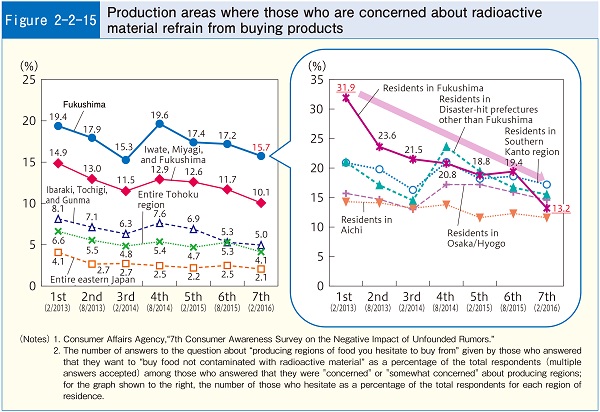Consumers' behavior and attitude
Part 1 : Today's consumer issues and consumers' behavior/attitude
Chapter 2 : Consumer-related socioeconomic situation and consumers' behavior/attitude
Section 2 : Consumers' behavior and attitude
More consumers are committed to take action, such as closely checking labels
- More consumers are committed to take action, such as "closely checking and understanding labels and descriptions before selecting products/services," "knowing and having in mind how to respond to potential problems" and "understanding the management of personal information, and take action properly."
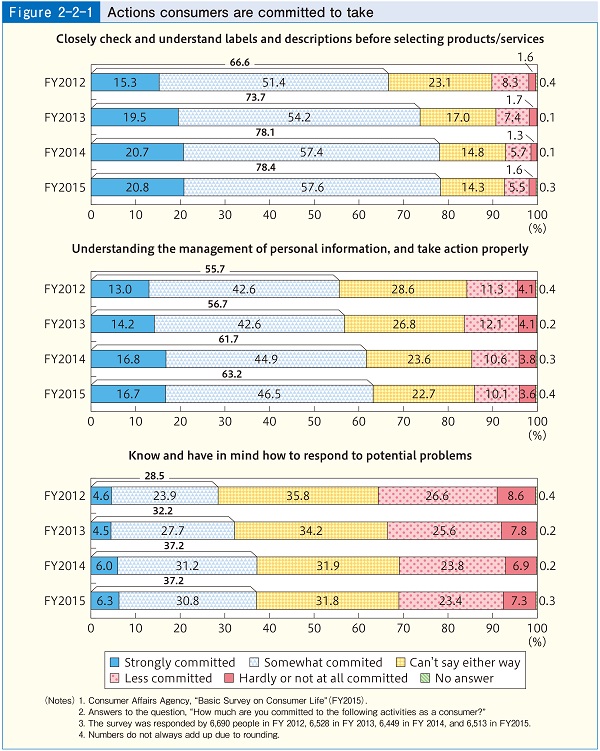
Many consumers select products while considering their "price," "functionality," and "safety"
- Many consumers select products or services while considering their "price," "functionality," and "safety."
- As consumers become older, the number of consumers who take into account "how their complaints and requests would be dealt with" increases.
- As consumers become older, the number of consumers who consider "the effects of products and services on the environment" and "managerial policy, ethos, and social contribution activities" increases.
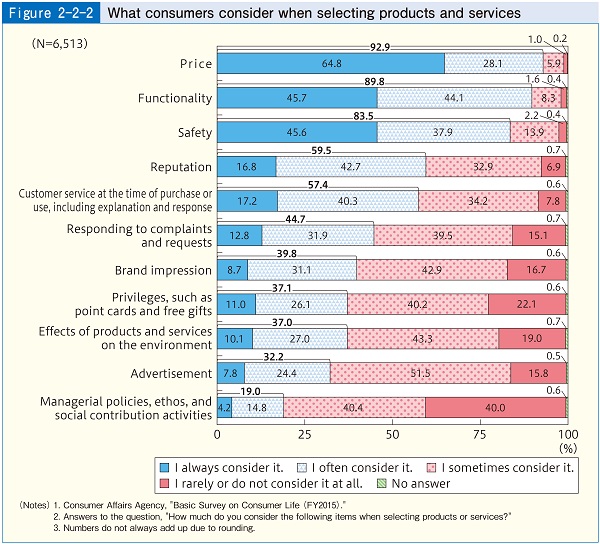
Among the consumer issues that occurred in the past 2 years, "the safety of food products" and "false labelling, deceptive advertising, etc." are attracting attention
- Among the consumer issues that occurred in the past 2 years, "the safety of food products" and "false labelling, deceptive advertising, etc." are attracting attention.
- The comparison among age groups indicates the differences in characteristics between the group in their 20s and the group aged 70 or older.
- 29.8% of consumers aged 70 or older are interested in "Internet-related troubles," while 55.8% of consumers in their 20s are interested in them.
- Over 50% of consumers aged 70 or older are interested in "fraudulent schemes," while 25.6% of consumers in their 20s are interested in them.
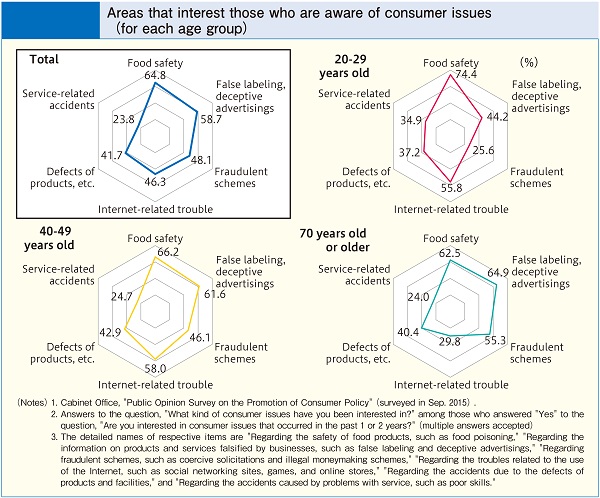
About 10% of consumers have experienced consumer harm and problems in the past 1 year
- Consumers who said they had experienced consumer harm and problems with products or services purchased in the past 1 year accounted for 10.9%.
- A large proportion of consumers have experienced such troubles as "They found product functionality/quality or service quality much poorer than expected" and "They found actual products/services markedly different from what had been advertised or represented."
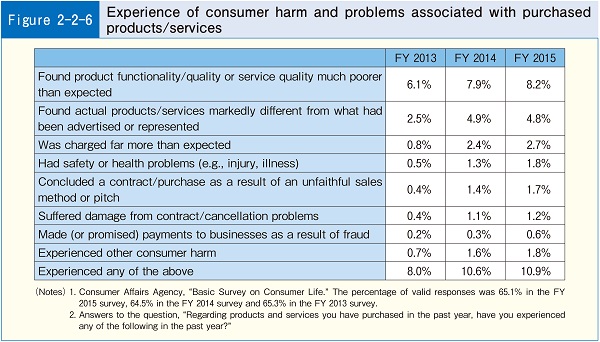
Public recognition of the food loss problem is increasing
- The annual "food loss" which means food waste discarded even in edible conditions amounts to 6.42 million tons (FY 2012).
- Since FY 2012, the Consumer Affairs Agency (hereinafter referred to as "CAA") has been conducting activities to reduce food loss in collaboration with related ministries and agencies.
- The public recognition of consumers is rising, and in FY 2015, 77.8% answered that they know the food loss problem.
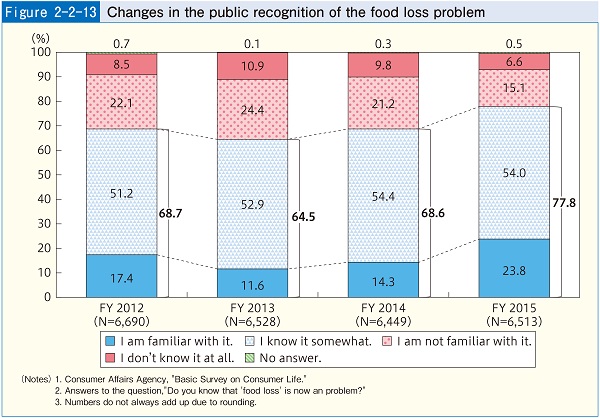
A certain percentage of people are still concerned about radioactive material and avoid food from specific regions, though the number is declining
- A certain percentage of consumers still hesitate to purchase food produced in Fukushima Prefecture, though the number is declining (15.7% as of February 2016).
- CAA, in collaboration with related ministries and agencies and local governments, strives to provide accurate information by conducting risk communication (information/opinion exchange gatherings), and the provision of the latest information to communicators trained in FY 2013 through websites and e-mail newsletters.
* Communicators refer to people who are trained to deliver accurate information to local communities.
